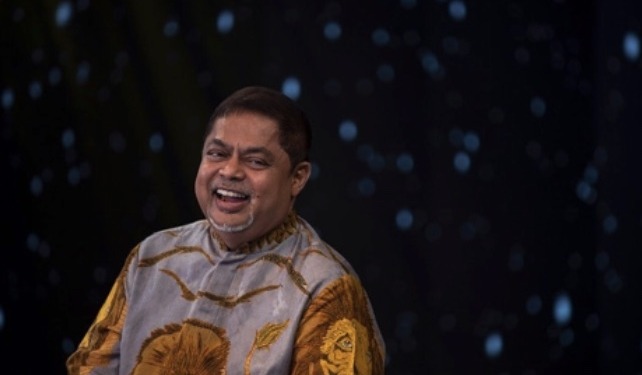In our age of constant connectivity and information overload, it’s easy to feel overwhelmed and adrift. We flit from one notification to the next, our attention spans shrinking with each passing tweet. In this context, Vijay Eswaran’s message of “bite-size life lessons” resonates deeply.
Vijay Eswaran, a successful entrepreneur and philanthropist, argues that the key to navigating our frenetic world lies in cultivating stillness and focus. He encourages readers to carve out time for quiet contemplation, even if it’s just for a few minutes each day. In these moments, we can connect with our inner selves and glean insights that might otherwise be lost in the daily clamor.
Eswaran’s emphasis on bite-size lessons is particularly apt. In our fast-paced lives, it’s often difficult to commit to lengthy periods of self-reflection. But even small moments of mindfulness can have a profound impact. A few minutes of focused breathing, a quick guided meditation, or simply reflecting on a quote or passage can help us to center ourselves and gain clarity.
A Little Bit Goes a Long Way … Over Time
Eswaran’s idea that absorbing information in small, bite-size portions is conducive to understanding (not just learning) isn’t exactly new, but perhaps more pertinent now than in the past.
“We are referring to the current millennial, centennial and Gen Alpha,” Eswaran said in an interview with Connected to India in early February. “So, they have this world of information in front of them; they just don’t know how to swim their way through it. They have no accompanying ideas or formative thought processes [to] help them implement what they’ve learned and [to] discern the good from the bad.”
He isn’t wrong. For most of human history, learning and education have been stalled or stunted not by an overload of information, but by lack of access to it. Social, political, and economic factors all played a role.
And they still do. But, to Eswaran’s point, there is much broader access to information with the proliferation of online content, more consistent high-speed internet access in more areas of the world, and a shift in more advanced economies to knowledge work. These factors, for many, solve the “information access” issue. But, as Eswaran also points out, it does create another issue.
“It’s not that they’re less focused,” Eswaran said in the same interview. “They’re very hungry, but they have too much information, with very little access to the wisdom that should accompany it.”
As the Bard wrote, “The fool doth think he is wise, but the wise man knows himself to be a fool.”
Wisdom and Knowledge
There are innumerable famous sayings cautioning against the possession of knowledge, which in today’s world can often be compared directly with “power,” with the use and application of that knowledge. “With great power, comes great responsibility,” often uttered by Spider-Man, comes to mind.
So how does one come upon wisdom? Time seems to be the best way, but time is not always a friend. And should a younger person lacking life experience be relegated to the role of “unwise” simply because of their age?
Vijay Eswaran doesn’t believe that necessarily needs to be the case. In his mind, the acquisition of knowledge can be paired with the wisdom to use, and sort, said knowledge appropriately.
And he believes that knowledge and wisdom can come paired for the student if this information is obtained through experience.
“If you need information, it needs to be programmed into your mind,” Eswaran said. “The only way that happens is it must somehow become experiential. That learning process, which is either reading or hearing, whichever way it may be, must be experiential.”
Eswaran believes highly in the well-tested and accepted theory that visualization (in this case, defined as the ability to generate a mental image of something, such as a concept) is a key component in that process.
“I use little stories that explain the moral or make one actually visualize the lesson,” he said. “Why? Because that’s how it gets embedded into the mind, and if it gets embedded in that fashion, you tend to remember it in that fashion.”
Finding Your Guide
For Eswaran, his spirituality, and the scriptures that come with it, have been driving forces in his ability to contextualize and understand lessons in a way that does provide wisdom, not just knowledge.
He also said that a mentor of his, in guiding him on how to absorb said lessons appropriately, told him to take it in small portions and allow the various “layers” of understanding to make their way to his mind. It’s the same guidance he gives readers of his self-help book, In the Sphere of Silence.
“Don’t read it from cover to cover [said the mentor]. This is not a fiction novel,” Eswaran said. “Read every sentence and remember, you have only understood one level. There are another six [levels] to go for every bit of information that you have acquired and begun to understand, as there are seven levels of understanding. So you have understood one; wait for the other six to kick in.”
And we come full circle to the need to absorb information slowly, and with context.
“The best way is to absorb [information or learning] in bits and pieces,” Eswaran emphasized. “Ponder over it, because this is the single most powerful [piece of] equipment, right?” he says.
And while Eswaran clearly sees the advantages to this method, he has also been very clear about the costs associated with success, however one defines that for oneself.
But he views those costs, and what they can turn people into, as a choice. Or has he framed it, the differing mindset between a “mercenary” (someone out only for themselves) or the “missionary” (someone who seeks to share).
“Before you begin your journey in whatever you want to do in your life you have to recognize that there is a price to pay to attain success in any form,” Eswaran said. “What separates the missionary from the mercenary is what kind of cost they’re ready to pay.”





























Discussion about this post